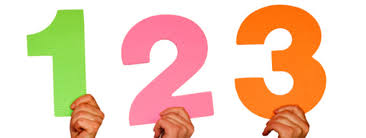
"Keep your (day) trading simple." It's logical advice, yet rarely does the one saying it explain how to keep it simple. With thousands of articles, indicators, strategies, and traders all saying something different, how do you reduce it all down to the bare minimum and keep it simple? Keeping your trading simple means following three steps, on every single trade...and only focusing on one step at a time.

01
The Setup
To be an effective trader you need a trade setup. In a sea of ever-changing conditions, you need to filter out all the non-relevant information on your chart. A setup is a precise set of conditions which must materialize to indicate a trade could happen. Every trader's setup(s) will be different; say for example you only trade breakouts from triangle patterns in the first two hours of the trading day, or in the first hour after lunch.
The triangle is your trade setup. When a triangle appears, it lets you know a trade could be imminent. Until the triangle appears though, you're relaxed and focusing on nothing but finding triangle chart patterns.
By having a setup, you keep your trading simple. You aren't concerned about whether the price falls, rallies, or what the news is saying. Until a triangle pattern appears (or whatever your specific trade setup is) you have nothing much to think about.
Until the setup occurs, you can't advance to the trade trigger.
02
The Trade Trigger
The best trade setups let you know in advance (at least slightly) what your entry point will be. Once a triangle chart pattern appears you know that your entry will occur when the price breaks out of the triangle (if that's your trade trigger). A trade trigger is an event that occurs following a trade setup that lets you know it's time to enter a trade, NOW. If using an indicator, the trade trigger could be the exact moment the indicator passes through a particular level or crosses another indicator line.
Once step one has occurred, and you have a valid trade setup, you no longer question whether you have a valid trade setup, this was already decided. Once you've identified a trade setup, your only task is to isolate where/when the trade trigger is.
03
Risk/Reward Assessment
A setup has occurred, and you defined exactly where/when you will enter the trade. During each stage there's nothing else to think about—in the first stage you watch for setups, that is it; in the second stage, you define your entry point. With a setup in place, and a trade trigger pending, your next step is to determine if you take the trade or not.
If the potential reward based on the setup (and your research and testing) outweighs the risk, execute the trade when the trade trigger occurs. If the potential reward doesn't outweigh the risk, move back to step one and start looking for another setup.
Being aware of economic or company-specific news events is part of the risk/reward assessment. Since we can't know in advance how the market will react to an economic release, avoid taking (or being in) trades three minutes before or after a high-impact economic/company-specific data release. Check an economic-calender before the trading day begins, so you know the data release times. Block off those times on your charts, so you know not to take trades, leaving you to focus on each stage as it comes.
Considerations and Final Word
At any given moment during the trading day, there's only one thing you're thinking about, and that one thing is dependent on which step you are on. All other information is irrelevant. First, only focus on finding your trade setup(s). Once you've found a trade setup, only focus on finding where the trade trigger is. Once you know the trade trigger, you can determine where your stop loss order and profit target will go. Based on the stop and target (and/or the win rate of the strategy) focus on whether you'll take the trade when the trade trigger occurs. If the trade makes sense, execute the trade at the trade trigger. If the trade doesn't make sense, move back to step one.
It is how you keep your trading simple in real-time. It requires that you've done your homework though. You need to have defined a trade setup, determined what a respectable risk/reward ratio is (and how you will establish your risk and reward) and it also means you have isolated a precise event which tells you when to get into trades.

Risk Warning: The above content is for reference only, and does not represent JRFX’s position. JRFX does not assume any form of loss caused by any trading carried out in accordance with this article. Please consult your financial planner for your investment portfolios and manage your own risk.
JRFX is an online CFD broker providing more than 50 products for Forex, metals and commodities. Open a trading account within a minute. Deposit 100USD and download our MT4 trading platform now! We have unprecedented promotion program!

|

|

|

|

Views: 1648

Likes: 0
